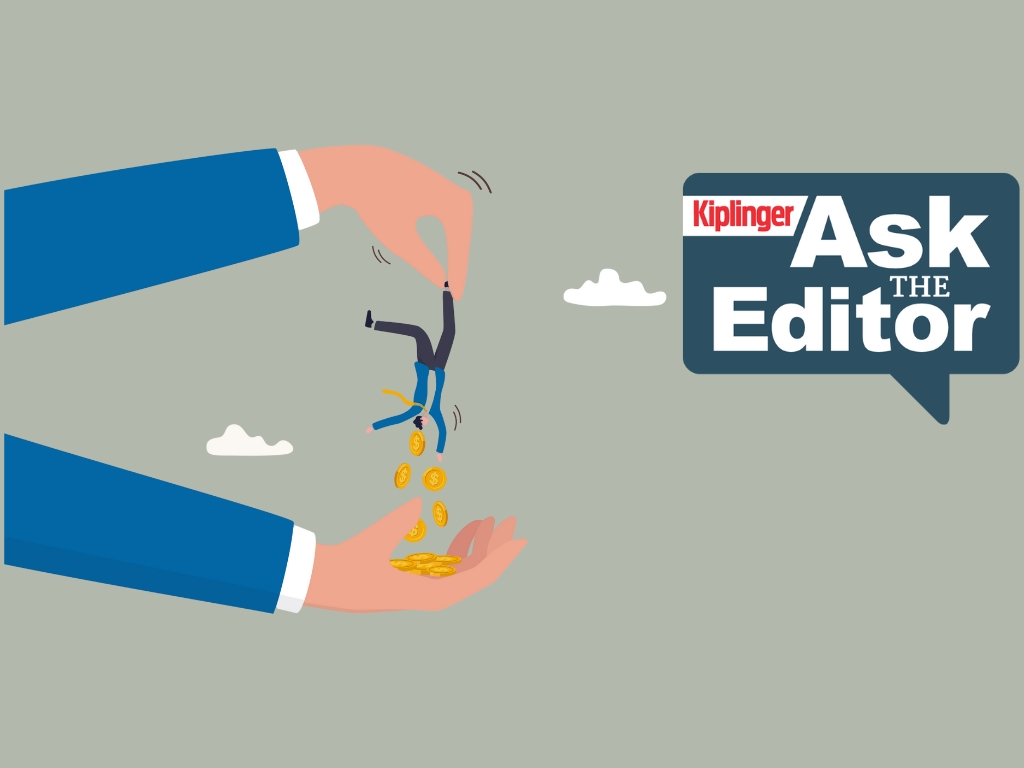How You Can 'TAP' into Home Equity to Help Keep Your Retirement Stable
When used judiciously, a home equity line of credit, or HELOC, can be a tool to help retirees control their taxes and can serve as a potential backstop when unexpected expenses hit.

Retirees face plenty of financial challenges these days, from volatile markets that can upend their security to low interest yields that in some cases don’t even allow them to keep up with inflation.
But with all the issues that confront them, perhaps the most significant financial burden is this one: taxes. After all, many retirees — and people approaching retirement — have stashed much of their savings in traditional IRAs or 401(k)s, which are tax-deferred methods for accumulating wealth. Also, taxpayers may elect to use other tax-deferred accounts in order to avoid interest, dividends and capital gains from spilling onto their tax returns. These methods can allow taxpayers to potentially lower their income and taxes.
However, once we “turn on the faucet” and withdraw money from these tax-deferred accounts, additional income will need to be claimed on our tax returns.
From just $107.88 $24.99 for Kiplinger Personal Finance
Become a smarter, better informed investor. Subscribe from just $107.88 $24.99, plus get up to 4 Special Issues

Sign up for Kiplinger’s Free Newsletters
Profit and prosper with the best of expert advice on investing, taxes, retirement, personal finance and more - straight to your e-mail.
Profit and prosper with the best of expert advice - straight to your e-mail.
That is, unless the retirees take steps that will help them reduce how much they owe the government. After all, designing a strategic income plan to help mitigate the tax burden of income in retirement is an essential, but often neglected, part of financial planning.
I refer to such a plan as “TAP,” or tax-advantaged payout. One lesser-known tool to consider tapping into for tax-free income is a home equity line of credit, or HELOC, on your home.
Here are two scenarios in which a HELOC may make sense in your retirement:
IRA drawdown.
Consider the example of an average married retired couple wanting to stay in the 12% tax bracket as joint filers. They can take up to $78,950 of taxable income from their IRAs to stay under this threshold in 2019, and that amount increases to $103,350 after adding the standard deduction of $24,400. Then, for any additional funds they may need during the year, they can tap into the HELOC. For example, if they take $15,000 out, they will actually receive $15,000 tax-free.
By comparison, taking the same amount from their IRA would push them into the 22% tax bracket, resulting in $3,300 in federal taxes being due in addition to any state or local income taxes. Thus, they may only receive roughly $10,000 after taxes from their IRA withdrawal. Not only is the HELOC tax-free, the interest rate charged on a HELOC is generally low at this point in time. In addition, depending on what you use the money for, that interest may be tax deductible, and repayments can be planned over a multiyear term to be covered by future IRA distributions or other investment income. This strategic “TAP” approach spreads out the tax impact to continuously stay under tax bracket thresholds, keeping as much of your money in your hands as possible.
Emergency money.
Unexpected expenses can crop up throughout a lifetime, whether for significant home repairs, health care needs or other costly surprises. If you do not have the funds available in a checking or savings account, don’t let the emotion of a stressful emergency drive you to make impulsive (and costly) financial decisions. Rather than turning to a high-interest credit card or cashing out investments at an inopportune time in the market, a HELOC can be a smart place to turn. This can give your financial adviser time to plan an exit strategy rather than rushing to liquidate securities. This also allows time to design a repayment plan that maximizes both tax and investment advantages to your favor.
As a bonus potential savings opportunity, if you are considering purchasing a new home or refinancing an existing home, you may consider setting up a HELOC at the same time. Many banks will offer a discounted or “free” HELOC closing, making it an even more cost-effective tool to consider.
Of course, like most things in life a HELOC does have disadvantages. For example, the interest rate is variable, which means the monthly payment can be unpredictable, especially during times of rising interest rates.
While there are other ways to leverage the equity of your home to create cash flow in retirement, a HELOC may be most desirable for some retirees, based on its flexibility for scenarios such as future downsizing or the potential need for assisted living facilities down the road.
In short, a HELOC can be a powerful tool as part of a proactive and comprehensive cash-flow plan in retirement.
Ronnie Blair contributed to this article.
Investment advisory services are offered through Calibre Investment Management, LLC, a Registered Investment Adviser. For a list of full disclosures, please click here and scroll to the bottom of the page.
Profit and prosper with the best of Kiplinger's advice on investing, taxes, retirement, personal finance and much more. Delivered daily. Enter your email in the box and click Sign Me Up.

Pete Lang is an Investment Adviser Representative and president of Lang Capital, with offices in Hilton Head and Charlotte, N.C. Now retired from the public practice of law and accounting after 20 years, Pete specializes in assisting his clients with investment, retirement and tax-planning strategies.. His background makes him uniquely qualified to handle the most complex retirement, tax and estate plans.
-
 AI Appliances Aren’t Exciting Buyers…Yet
AI Appliances Aren’t Exciting Buyers…YetThe Kiplinger Letter Artificial intelligence is being embedded into all sorts of appliances. Now sellers need to get customers to care about AI-powered laundry.
-
 Ask the Editor: IRAs, 401(k)s and RMDs
Ask the Editor: IRAs, 401(k)s and RMDsAsk the Editor In this week's Ask the Editor Q&A, Joy Taylor answers questions on IRAs, 401(k)s and required minimum distributions
-
 Got $100 to Gamble? These Penny Stocks Could Be Worth the Ride
Got $100 to Gamble? These Penny Stocks Could Be Worth the RideVolatile penny stocks are high-risk plays with potentially high rewards. If you have $100 you can afford to lose, these three names are worth a look.
-
 Quick Question: Are You Planning for a 20-Year Retirement or a 30-Year Retirement?
Quick Question: Are You Planning for a 20-Year Retirement or a 30-Year Retirement?You probably should be planning for a much longer retirement than you are. To avoid running out of retirement savings, you really need to make a plan.
-
 Don't Get Caught by the Medicare Tax Torpedo: A Retirement Expert's Tips to Steer Clear
Don't Get Caught by the Medicare Tax Torpedo: A Retirement Expert's Tips to Steer ClearBetter beware, because if you go even $1 over an important income threshold, your Medicare premiums could rise exponentially due to IRMAA surcharges.
-
 I'm an Insurance Pro: Going Without Life Insurance Is Like Driving Without a Seat Belt Because You Don't Plan to Crash
I'm an Insurance Pro: Going Without Life Insurance Is Like Driving Without a Seat Belt Because You Don't Plan to CrashLife insurance is that boring-but-crucial thing you really need to get now so that your family doesn't have to launch a GoFundMe when you're gone.
-
 I'm a Tax Attorney: These Are the Year-End Tax Moves You Can't Afford to Miss
I'm a Tax Attorney: These Are the Year-End Tax Moves You Can't Afford to MissDon't miss out on this prime time to maximize contributions to your retirement accounts, do Roth conversions and capture investment gains.
-
 I'm an Investment Adviser: This Is the Tax Diversification Strategy You Need for Your Retirement Income
I'm an Investment Adviser: This Is the Tax Diversification Strategy You Need for Your Retirement IncomeSpreading savings across three "tax buckets" — pretax, Roth and taxable — can help give retirees the flexibility to control when and how much taxes they pay.
-
 Could an Annuity Be Your Retirement Safety Net? 4 Key Considerations
Could an Annuity Be Your Retirement Safety Net? 4 Key ConsiderationsMore people are considering annuities to achieve tax-deferred growth and guaranteed income, but deciding if they are right for you depends on these key factors.
-
 I'm a Financial Pro: Older Taxpayers Really Won't Want to Miss Out on This Hefty (Temporary) Tax Break
I'm a Financial Pro: Older Taxpayers Really Won't Want to Miss Out on This Hefty (Temporary) Tax BreakIf you're age 65 or older, you can claim a "bonus" tax deduction of up to $6,000 through 2028 that can be stacked on top of other deductions.
-
 Meet the World's Unluckiest — Not to Mention Entitled — Porch Pirate
Meet the World's Unluckiest — Not to Mention Entitled — Porch PirateThis teen swiped a booby-trapped package that showered him with glitter, and then he hurt his wrist while fleeing. This is why no lawyer will represent him.